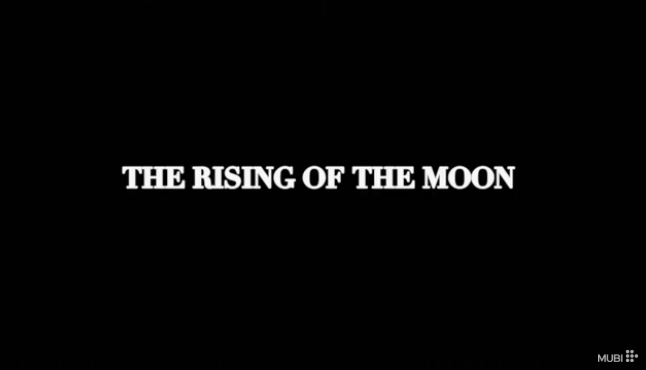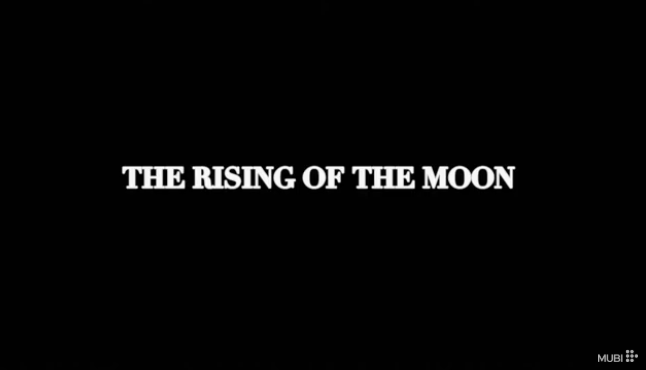
 A video essay that explores Irish political struggles through a rich and varied cinematic history.
A video essay that explores Irish political struggles through a rich and varied cinematic history.
“The history of cinema appears to be easy to do, since it is after all made up of images; cinema appears to be the only medium where all one has to do is re-project these images so that one can see what has happened. In “normal” history, one can’t project, because it’s not projectable; one has to codify in one form or another, write, make manuscripts; whereas here it would seem that all one has to do is reproduce”
–Jean-Luc Godard
“I go to encounter for the millionth time the reality of experience and to forge in the smithy of my soul the uncreated conscience of my race.”
–James Joyce
The legacy of colonization still lingers over the economic, geographical, and political relationship between Ireland and the United Kingdom, yet the colonial crimes committed by the Empire on Irish soil remain largely undigested. The details of the Great Famine and the atrocities committed by the Black and Tan soldiers are unlikely to be found on any school curriculum in the UK, and, despite repeated calls from residents of Northern Ireland, a truth recovery process to uncover the role that the British government played in the Troubles has been repeatedly stalled by Westminster. If the representation of Irish identity on screen remains largely dominated by British cultural forces, The Rising of the Moon draws on a rich repository of indigenous counter-images to challenge simplistic portrayals that tend towards either sentimentalization or vilification.
Growing out of an era of immense technological and political transformation, the silent Irish cinema of the early 20th century defined itself through its revolutionary vigor, its engagement with national identity, and its distinction from Englishness. The first wave of revolutionary cinema produced in the years that preceded signing of the Anglo-Irish treaty, films such as Rory O’More (1911), For Ireland’s Sake (1914) and Knocknagow (1918), sought to contextualize the contemporaneous political upheaval within a grand lineage of Irish resistance. The archetype of the martyred revolutionary was a particularly prominent one, a figure whose refusal to passively accept injustice would typically result in them being brutally suppressed by the British authorities. Using stories of past insurgences as allegories for current political battles was an artistic strategy bound to a Republican movement that sought to mobilize the public by establishing a continuity between contemporary hardship and centuries of oppression inflicted by colonial rule.
The signing of the Anglo-Irish Treaty in December 1921 brought an end to the War of Independence and acknowledged the existence of the Irish Free State but, rather than ensuring peace and prosperity, marked the beginning of further division. The Treaty, devised by the British government led by Prime Minister David Lloyd George, determined that the South would become a 26 County Free State with dominion status, while the 6 counties of the North would remain under British rule. Although the Treaty narrowly passed through Irish parliament, the legitimacy of the vote was contested due to the threat of further, more aggressive British military action being implemented in the country if the terms were not agreed to. Hostilities between those who supported the Treaty and those who opposed it erupted into a civil war that lasted until a ceasefire was negotiated in May 1923. The issues of independence and partition remained contentious, however. Instability in Northern Ireland erupted into armed warfare in the late 1960s, with the 50th anniversary of the 1916 Rising serving as the catalyst for widespread reflection regarding the legacy of the War of Independence and the possibility of re-unification. The decades of violence which followed were memorably captured in features including: Alan Clarke’s Contact (1985), an unflinching portrayal of the brutality inflicted on civilians in Northern Ireland by British paramilitaries; Elephant (1989), an attack on the failure of the British government to acknowledge the horrific effects of partition and the decades of conflict that it spawned; and Marcel Ophüls’ A Sense of Loss (1972), an invaluable document of the suffering experienced during the period that granted a voice to pro-Republican politicians and academics whose views would not be broadcast on mainstream television. Although the Good Friday Agreement heralded a substantial step towards harmony, it would be naïve to believe that the permanent stability has been established in the region. Elements of cultural segregation remain, the scars of the past still haunts communities, and many victims of violence have yet to receive closure. With Britain’s exit from the European Union on the horizon and the implementation of a hard border between Ireland and Northern Ireland a tangible possibility, tensions within the region are on the rise, and its future seems uncertain.
The Rising of the Moon is an audio-visual exploration of the Irish struggle for independence as it has been mediated through cinematic images. Adopting a method of archaeological montage inspired by the work of Jean-Luc Godard, Harun Farocki, and Chris Marker, it locates rhymes and echoes between audio-visual material accumulated from over a century of Irish filmmaking. Issues of martyrdom, emigration, rural dispossession, social alienation, cultural memory, and economic inequality, rise to the forefront of this excavation as it assembles fragmentary citations into intricate constellations of sound and image. The cinematic representation of four significant periods in the history of Irish independence are reflected upon in particular: the rebellion of 1798, the 1916 Easter Rising, the war of independence, and the Northern Irish Troubles. By locating these associations, The Rising of the Moon constructs a non-linear and interstitial form of historical perception wherein struggles from various eras parallel one another and past events interpenetrate with the present moment. The associative interweaving of audio-visual material launches an investigation into the socio-political development of Ireland, and, reflexively, into the potential for cinema to function as a tool for performing historical thought.
Source:MUBI
